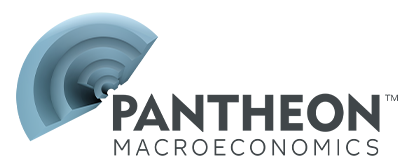China+ Publications
Below is a list of our China+ Publications for the last 5 months. If you are looking for reports older than 5 months please email info@pantheonmacro.com, or contact your account rep
Please use the filters on the right to search for a specific date or topic.
In one line: treading sideways
- - CHINA SIGNALS 'STEADY AS SHE GOES' POLICY APPROACH
- - JAPAN'S STEADY WAGE-HIKE OUTLOOK SHOULD NUDGE BOJ
- - BOK HOPING FOR RESPITE IN KRW PRESSURE
In one line: Reviving manufacturing activity but mounting cost pressures
Japan's flash PMIs find reviving manufacturing activity but mounting cost pressures
- The BoJ’s regional branches report steady wage-hike expectations for 2026, except at small firms.
- Japan’s December flash PMIs see manufacturing activity reviving but cost pressures mounting.
- The Q4 Tankan finds severe labour shortages, but these have yet to spur an uptick in broad wage growth.
- China’s November activity data point to slowing goods consumption but steady services spending.
- Still-falling fixed asset investment has yet to benefit from the quasi-fiscal-stimulus funding support.
- Policymakers will proceed cautiously on tackling the reasons for the weak demand, amid bright exports.
China's November activity data show goods consumption softening and fixed asset investment worsening
In one line: still looking for signs of private sector credit demand
- China’s Central Economic Work Conference last week was a damp squib...
- ...Unsurprisingly, given the relative calm compared with last year ’s impending tariff drama.
- Policymakers are signalling confidence, meaning they will stick to broad settings for 2026, with a few tweaks..
In one line:signalling confidence, no major course shift
- China’s inflation outturn was a mixed bag, with CPIrising but PPI reflation seeming to lose momentum.
- A closer look reveals the CPI jump was due to transient factors, while PPI was dragged down by base effects.
- Weak domestic demand persisted in November, with all eyes on the CEWC for hints on future policy direction.
- China’s December Politburo meeting yesterday signalled greater confidence in the near-term outlook...
- ...allowing renewed focus on long-term structural issues as well as near-term demand support.
- Exports rose 5.9% year-over-year in November, thanks to demand from non-US markets.
Politburo signals urgency to stabilise domestic demand
Chinese exports resume solid growth to non-US markets
Japanese wages lifted by bonuses
- China’s industrial-profit recovery stalled in October after emerging from the trough in the summer.
- The deterioration was broad-based, but the slowdown was led primarily by weakness in manufacturing.
- Two of the three industrial-profit drivers worsened, and feeble demand failed to create more revenue.
In one line: China’s industrial profit recovery stalled as growth driver weaken in October
In one line: Bank of Korea stand pats on better growth prospects, higher inflation trend due to the weak won
In one line: Japan’s services and manufacturers face worsening inflation dynamics.
In one line: Korea’s WDA 20 day export growth moderates in November despite headline rebound.
In one line: Japan’s inflation and currency backdrop favours policy normalisation, but politics cloud a near-term BoJ hike.
In one line: China holds fire on LPR cuts amid banking NIM compression
